culture, japanese festival
Omamori: The Powerful Japanese Amulets for Good Luck!

Anna Ayvazyan
Posted on September 27, 2022
Share:
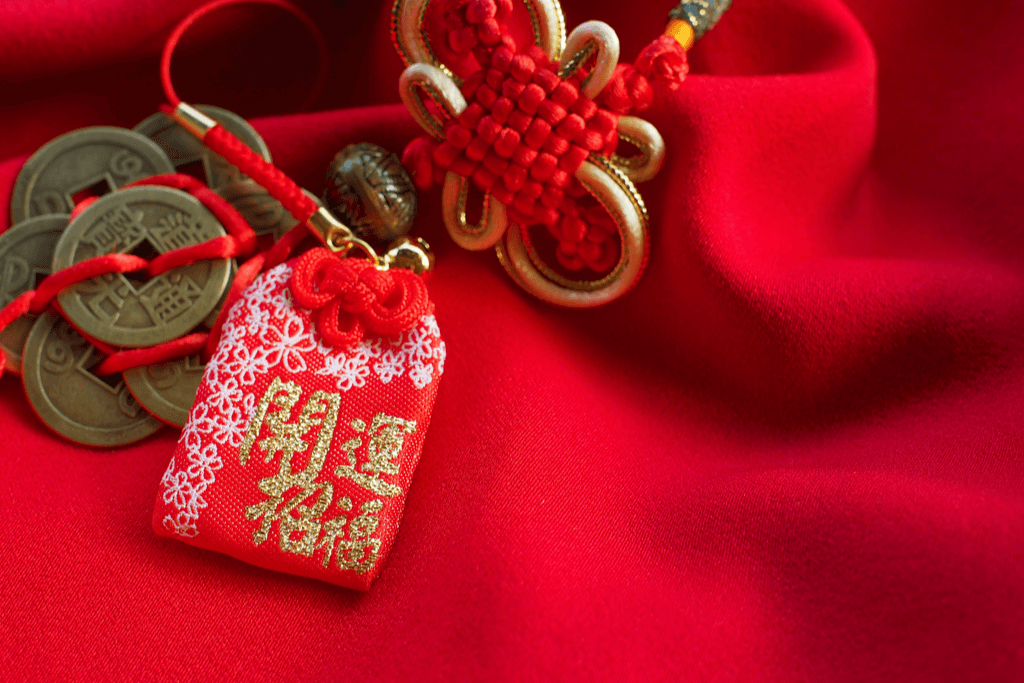
An omamori is an amulet or good luck charm from Japan that wards away evil. There are many amulets/charms for different milestones, such as passing a school exam, getting married, etc. Omamori also comes in different shapes, sizes, and prices. We’ll explore the history of omamori and the different types of omamori you can buy in Japan.
History of Japanese Good Luck Charms (Omamori)
There are several theories about the exact time of the omamori’s origin. The most common theory is that omamori were based on magatama (comma-shaped stone jewels). Magatama appeared sometime in the Jomon Period (14,000–300 BCE).
People originally wore magatama to ward off evil spirits. From then on, temples and shrines sought ways to promote their religions to ordinary people. Visiting a temple or shrine at the time was difficult because they were pretty far.
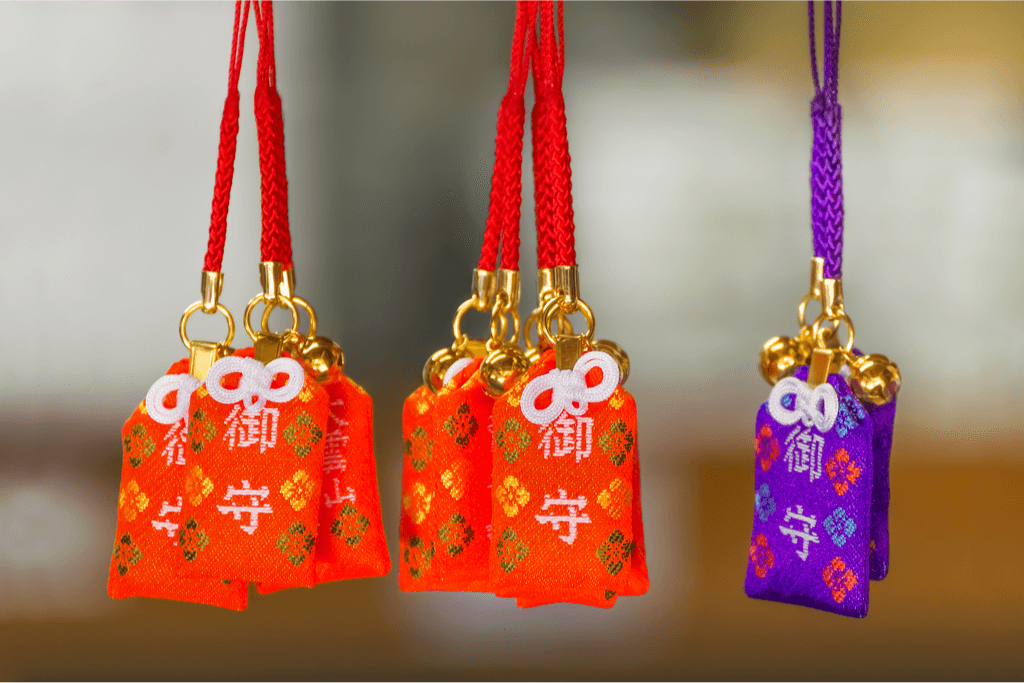
So priests combined the Shinto/Buddhist belief of animism with leaving pieces of wood or stone near dwellings. This began the precursor of modern omamori and eventually spread to the general public.
Additionally, the closest thing to what omamori is like today first emerged in the Heian Period (794–1185). People started carrying them with personal belongings during the Kamakura Period (1192 – 1333). Samurai, in particular, received protective amulets to help them survive on the battlefield.
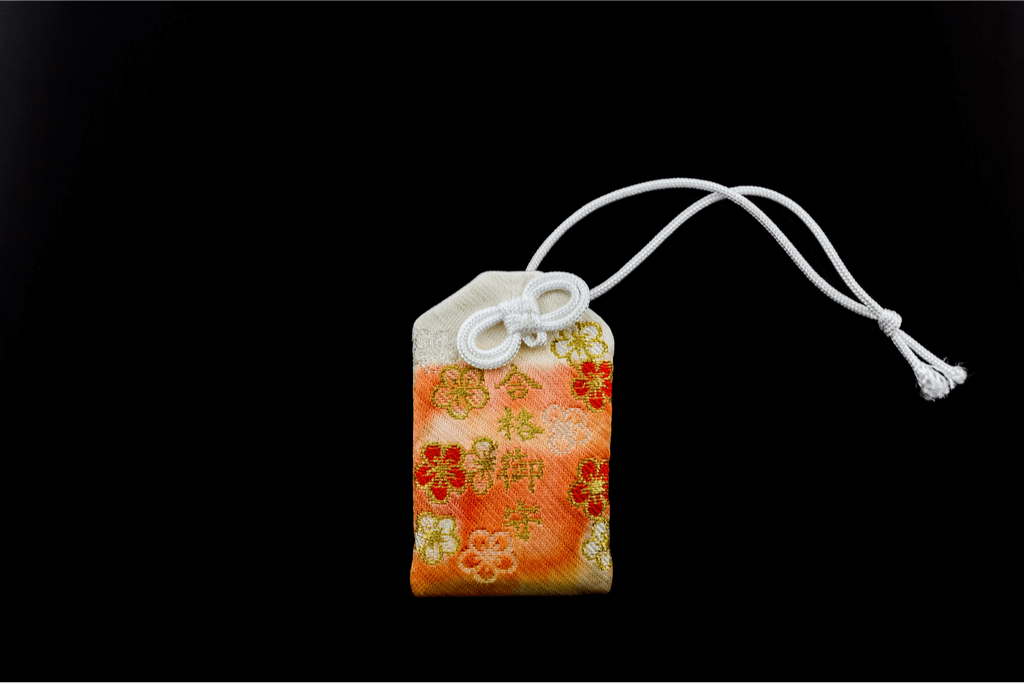
What does omamori look like now?
Eventually, priests made hundreds of different types of omamori for different occasions. As a result, you can find whichever ones you want at shrines and temples. Most omamori have similar features: fuda – a small written prayer or invocation. Priests/manufacturers then wrap the fuda in a silky cloth/bag and stamp it with the shrine/temple’s name.
A string is attached, and then a priest prays over it. Moreover, the omamori is sold at shrines or temples for around 300-1000 yen (roughly 2-7 USD) each. Occasionally some shrines or temples may have exclusive omamori that can only be purchased during a set period.
Want to get a taste of authentic Japan? Check out Sakuraco! Sakuraco sends traditional Japanese sweets & snacks from across Japan to your door so you can explore traditional Japanese taste at your convenience!

Types of Omamori
The most common types of omamori are shiawase (happiness), kai-un (good luck), kotsu-anzen (traffic safety), en-musubi (love and marriage), kenko (health), katsumori (success and victory) and kanai anzen (family safety).
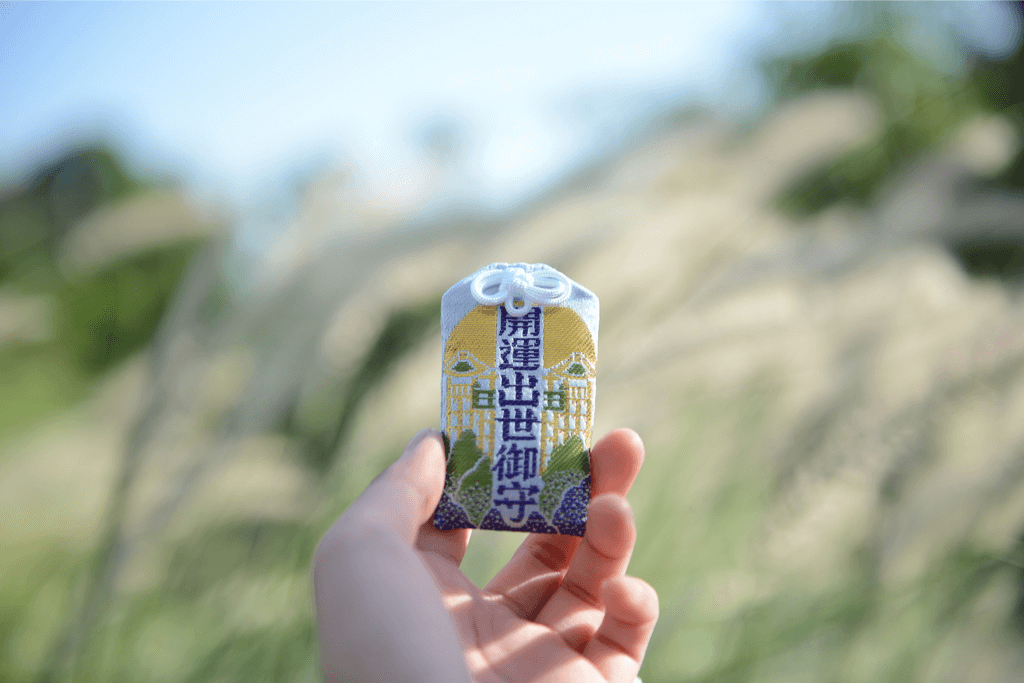
Shiawase (Happiness)
Because everyone lives very busy, it is sometimes hard to remember the value of happiness. Specifically, the charm aims to bring happiness to your life or whoever you give it to. Pay attention daily so you can receive the blessing in full!
Kai-un (Good Luck)
If you feel like a bad luck magnet, buy a charm to help draw good luck. Additionally, if you want extra protection, you can see if the shrine or temple has a yakuyoke (avoiding evil) omamori.
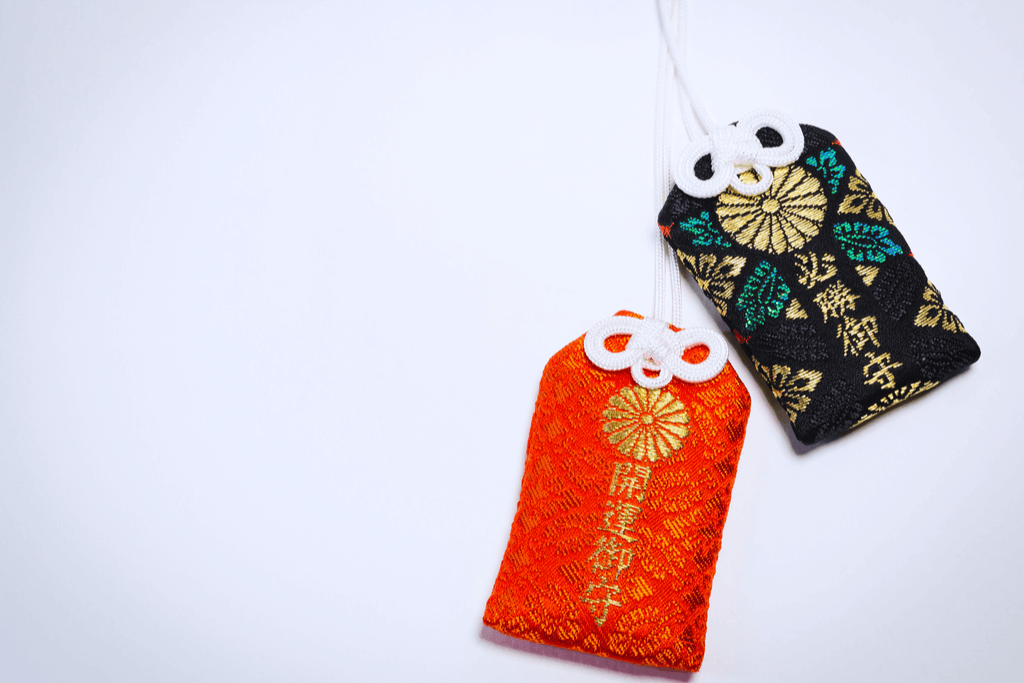
Kotsu-anzen (Traffic Safety)
Whether you use your car to travel or public transport, there is always some underlying worry that an accident may occur. This charm will help you feel safer and prevent you from getting into an accident. Many Japanese people put this charm in their car, attaching it to their rearview mirror.
En-musubi (Love and Marriage)
For those who are concerned about their romantic relationships, the en-musubi charm is perfect for you. This charm will help you find love and help protect your relationship or marriage from evil forces.
Kenko (Health)
Health is essential; if you want to help prevent illness, you should get this charm! Some shrines or temples will have more specific health charms for different body parts. They also have them for specific health-related events such as ansan (safe pregnancy delivery) or byouki-heiyu (surgery success).
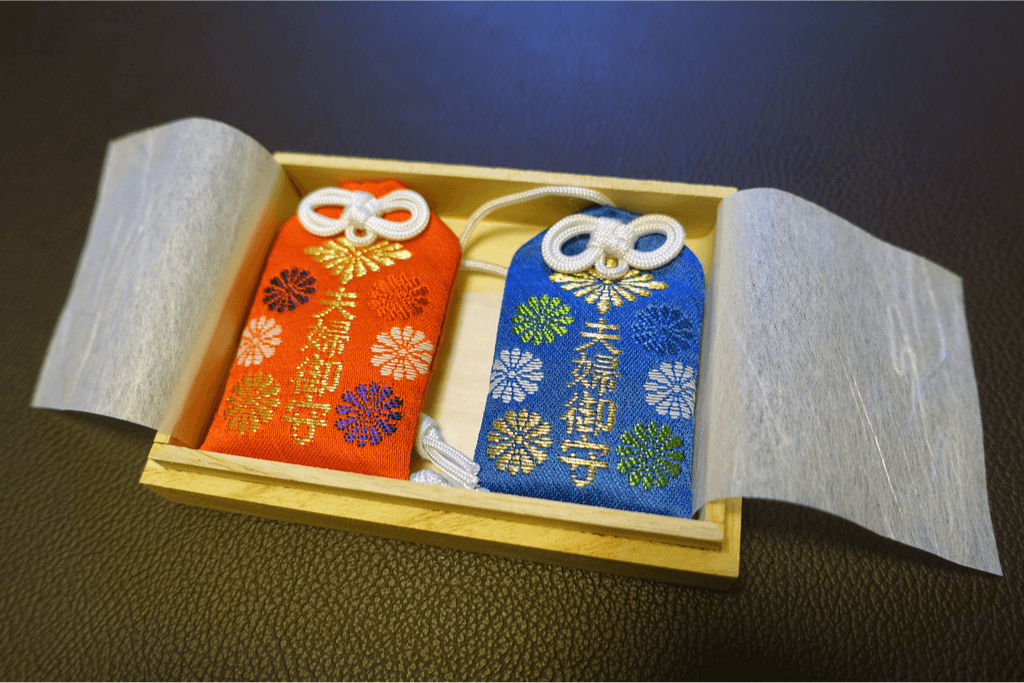
Katsumori (Success and Victory)
This charm is for anyone working on a project or activity who wants a favorable response. Some shrines or temples have specific omamori for those in school – Gakugyo Joju (academic success), Gokaku (exam success), or for those working in a business field – Shobai-Hanjo (business success).
Kanai Anzen (Family Safety)
If you have a family or plan to have one, this charm is for you! Kanai anzen means “Please keep my family safe.” It promotes good health and ward off evil for members of your family.
How to Dispose of an Omamori
Omamori has a limited lifespan of just a year. Most priests recommend removing an omamori after a year, or you may invite bad luck.
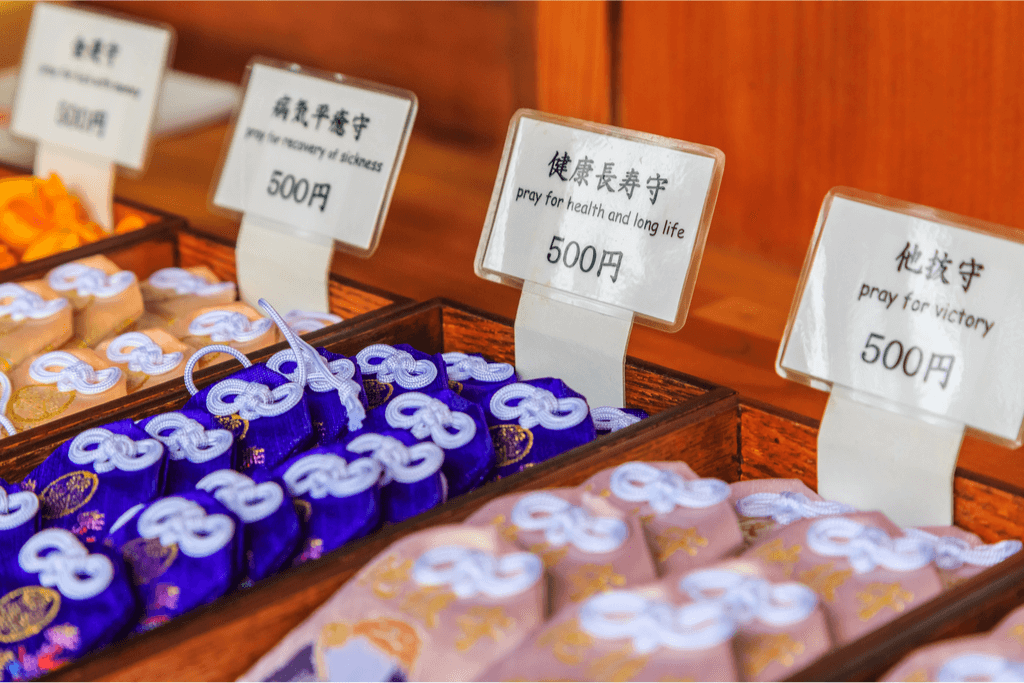
Simply return it to the original shrine or temple that you returned it from so that the staff can properly dispose of it for you. Returning the omamori to the shrine or temple represents the Shinto/Buddhist belief in the importance of renewal.
However, if you can’t make it to a shrine or temple, please take the following steps at home:
- Spread white hanshi (rice paper or calligraphy paper on the floor).
- Place the charm on the paper.
- Sprinkle salt on the left side of the charm, then the right, then the left once more.
- Wrap the charm in the paper and dispose of it
- Give thanks during the process.
Nowadays, it is common for people to collect omamori and use it as decoration around the house. As long as you do not break it and maintain respect towards it, nothing wrong should happen to you. It is also common to pass down these good luck charms in families. Omamori, when used correctly, can become a perfect gift for your family straight from Japan. You can also purchase it during the New Year, during the hatsumode season. Have you ever used an omamori before? Let us know in the comments below!

Discover authentic flavors with Sakuraco
Get Sakuraco 

Discover authentic flavors with Sakuraco
Get Sakuraco 
Related Articles

Japanese Fish Bait: The Beautiful Art of Kebari
Kebari are traditional hand-tied flies used for freshwater fishing in Japan, especially in mountain streams where small insects form the main diet of native fish. Instead of bright plastic lures, kebari use feathers, thread, and natural materials to create subtle movements in the water.

Japan Holidays Guide: Relax, Explore, and Delight in Festive Fun
As the year draws to a close, everywhere buzzes with preparations for the holidays, and Japan is no exception. Despite the cold winter weather, you can feel warmth in the scenery, decorations, and festive activities across the country. Let’s explore the unique experiences of holidays in Japan that many people dream of enjoying at least once in their lifetime!

Tokyo Gardens: Five Beautiful Traditional Japanese Gardens to Visit
Tokyo gardens offer a relaxing escape for visitors looking to get a breath of fresh air. However, Tokyo has more than just the typical gardens we see in the West. Let’s explore five traditional Japanese gardens and what makes them unique!

Japan Cruise Spotlight: The Ultimate Guide to Abashiri Icebreaker!
Japan offers a diverse range of cruise experiences, taking in various stunning landscapes. But, in the chilly grip of winter, some voyages pull in adventurers from around the globe. At the forefront of these wintry trips is the Abashiri Icebreaker Cruise in Hokkaido.


